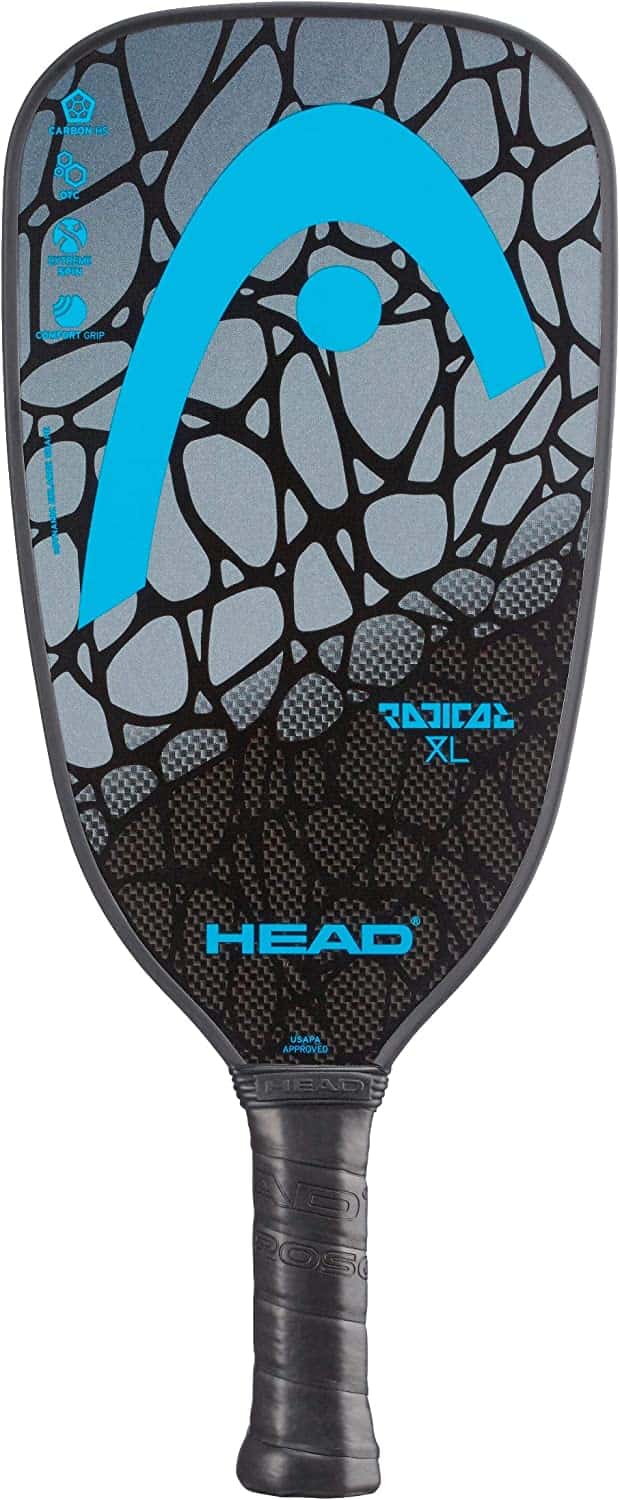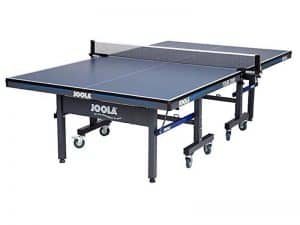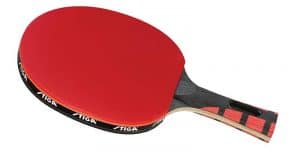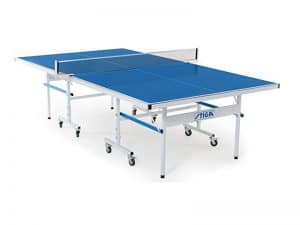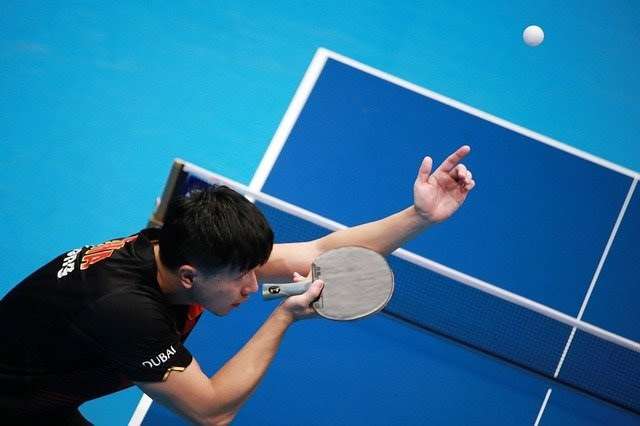Pickleball Rules: The Complete Guide
- Alex Horscroft
- Last updated
Before diving into playing pickleball, you first need to learn how to play the game. While most pickleball rules are fairly straightforward and similar to other racket sports, there are certainly those that are irregular. When combing through the ruleset, quite a few surprised me! So let me help outline all of the pickleball singles rules you need to know.
Table of Contents
How To Play Pickleball: The Basic Rules
You can understand the pickleball basics in a few minutes. Pickleball is often considered a mix between tennis, badminton, and table tennis, as it draws similarities from each sport.
You play the game on a 20ft x 44ft court (the same size as badminton). Each player uses a hard face, stringless paddle, and hard balls with holes in the middle.
Much like tennis and table tennis, players strike the ball after it bounces on their side of the court. However, they may also volley the ball if they are outside of the non-volley zone. This is the most basic pickleball rule.
Pickleball Rules and Scoring
Serving
There are just 6 rules you need to understand and follow. Here they are!
- Serves must be diagonal to the correct area. Much like tennis or doubles table tennis, you serve diagonally. You also need to serve from the right side, depending on the serving sequence.
- Your feet must be behind the baseline. At least one foot must be in contact with the ground, and you cannot step beyond the imaginary extension of the centerline or sideline.
- You must release the ball with one hand. And you cannot produce spin with your hand when you release the ball. You may also release the ball with your paddle rather than your non-playing hand.
- Contact with the ball must be underhand and not above the waist. You cannot serve overhand like in tennis, so the serve in pickleball is much slower. You must also use an upward motion to strike the ball.
- The highest point of the paddle must not be above the wrist. This means the face of your paddle should be pointing downwards.
- No second serves. So you had better make yours count. Consistency is key!
Read More: Best Pickleball Paddles
Serving Sequence

- In singles play, if the team’s score is even, the serve is taken from the right, and if the score is odd, it is taken from the left.
- In singles play, the service switches to the opponent when the server loses the point.
- In doubles play, both players serve until a point is lost on each of their serves. This excludes the first service of each game. In this scenario, serving is given to the opposing team after the first server loses their serve.
- In doubles play, whenever a service change occurs, service begins on the right side.
- In doubles play, when the second player begins serving, they serve in the correct position according to their score: even from the right and odd from the left.
- When a point is successfully won, the server switches to serve cross-court to the opposing side.
Volleys
Volleys refer to striking the ball before it bounces on your side of the court. They are great for speeding up play and putting your opponent under pressure. However, there are limitations on when you can use them.
- No player may volley the ball in the non-volley zone adjacent to the net, also known as the kitchen. This specifies the shot in its entirety, including the follow-through.
- It is considered a fault if a player contacts anything in the non-volley zone while volleying. This includes the player’s partner.
- If a player has entered the non-volley zone, both feet must touch the ground outside of the volley zone before playing a volley. Jump volleys originating within the non-volley zone that land outside of the non-volley zone are illegal.
Read More: Best Pickleball Balls
Faults
All fault balls result in a service change (from player 1 to player 2 in doubles) if the offending team is serving and a lost point if they are receiving.
- If the ball is struck before it bounces for a serve or service return.
- If the ball does not go over the net and land on the opposing side on the first bounce.
- If the ball is not returned before bouncing twice or thrice for wheelchair players.
- If any serving or non-volley zone rules are violated.
- If the ball strikes an item of clothing or body part before contact with the ball is made. This excludes contact with the playing hand during a shot.
- Any means of interrupting play, such as catching the ball.
- Striking the ball before it has cleared the net.
- A hinder which is deemed invalid by the referee.
- A live ball striking any permanent object, e.g., the ceiling, referee, lights, etc.
Additional Rules
- Double hits are permitted, provided they are unintentional and occur during a continuous shot.
- Players can switch their paddle to their other hand or play two-handed shots.
- The point continues if an injury occurs during a rally until a winner emerges.
- If, as a result of wind or backspin, a ball returns over the plane of the net from where it was struck, the receiver may cross the plane of the net to make a return. They may not touch the net, the opponent, or the opponent’s side of the court.
- Intentional distractions are not permitted. Any distraction deemed intentional will result in a fault.
- No player may contact the net while the ball is in play.
- Shots around the net are permitted.
- A player must be in control of their paddle when striking the ball. No throwing is allowed.
How Scoring Works
Pickleball scoring is fairly straightforward when you get your head past the fact that you can only score when you/your team is serving!
- Each team can only score points when they begin the rally serving.
- Games are usually played first to 11 points with a 2-point clearance. However, some games are played first to 15 or 21 points.
- If a match goes down to the deciding game, the player’s swap ends when one player reaches 6 points.
- Each match is usually played best of three games. However, if games are up to 15 or 21 points, just a single set is usually played.
Singles Pickleball Rules
While I often see 5 rules of pickleball being thrown around, I think the pickleball rules for singles fit better under 8 conditions. Here they are!
1. The Ball Must Remain in the Bounds of the Court
As with all racket sports, pickleball features an outlined court. The ball must remain within the bounds of this court. If either player fails to keep the ball in they commit a fault.
2. Serve Underarm Below the Waist
Unlike tennis, where you can send rockets your opponent’s way with overarm serves, pickleball is far more restrained. You have to serve underarm and contact the ball below the waist. This promotes longer rallies.
You also have to serve with at least one foot behind the baseline. Neither of your feet can touch the baseline until you have struck the ball.
3. You Always Serve From the Right When the Score Is Even
It’s easy to tell which side you should be serving from regarding your score. If it’s odd, you serve from the left side of the court, and if it’s even, you serve from the right. This means you switch sides after every successful point on your serve.
Irrespective of your position, you must serve the ball cross-court to your opponent so that the ball lands behind the non-volley zone. If it catches the non-volley zone line, you have committed a fault.
4. No Second Serves
Pickleball is commonly compared to a blend of tennis, table tennis, and badminton, so for this rule, it takes inspiration from the latter two sports.
You get just one serve in pickleball. No second chances. And unlike other sports where you replay let points (legal serves that strike the net), you replay them in pickleball. These points instead continue as normal. In 2022 it was proposed to bring the old let rule back, but the request was overturned.
5. You Can Only Win a Point When You Are Serving
The unique spin of pickleball is that you can only gain points when you are serving. This can give the illusion that you are performing worse than you actually are. If you can only win points on your opponent’s serve and consistently fail to secure points on your serve, you will quickly find yourself trailing greatly.
If it wasn’t already clear, the server holds their serve until they lose a point (just like in tennis and badminton).
6. The Ball Cannot Bounce More Than Once on Either Side
Like almost all racket sports that involve bouncing, the ball may only land once on either side of the court. If the receiving player allows it to bounce more than once, they lose the point.
Leading on from this, you should be aware of the “two bounce rule.” This rule stipulates that both the serve and serve receive must bounce before you strike it. As such, you cannot volley back a service return.
7. You Cannot Volley the Ball in the Non-Volley Zone
The non-valley zone is a small area adjacent to the net. Its purpose is to prevent easy smashes. While positioned in the non-volley zone, you cannot volley the ball, you must instead wait for it to bounce before striking it.
You should also know that you cannot strike the ball from outside of the non-volley zone and step into it as part of the same movement. This means jump smashes are out of the window, sorry!
While you can’t smash in the non-volley zone, you can enter it freely at any time.
8. You Win by Reaching 11 Points First With a 2-Point Lead
You play most games first to 11 points and have to get there with a 2-point lead. However, some games are instead first to 15 or 21 (with the same 2-point lead). If you become tied at 11-11, the first player to achieve 2 points of clearance wins the game.
As for the number of games, it is best out of 3. You switch serves and ends after each game, and if it goes down to a decider, in the final game, you switch ends when one player reaches 6 points if you are playing first to 11. If, instead, you are playing first to 15 or 21 points, it’s 11 and 21 points, respectively.
Read Next: How To Play Pickleball – The Ultimate Guide
Doubles Pickleball Rules
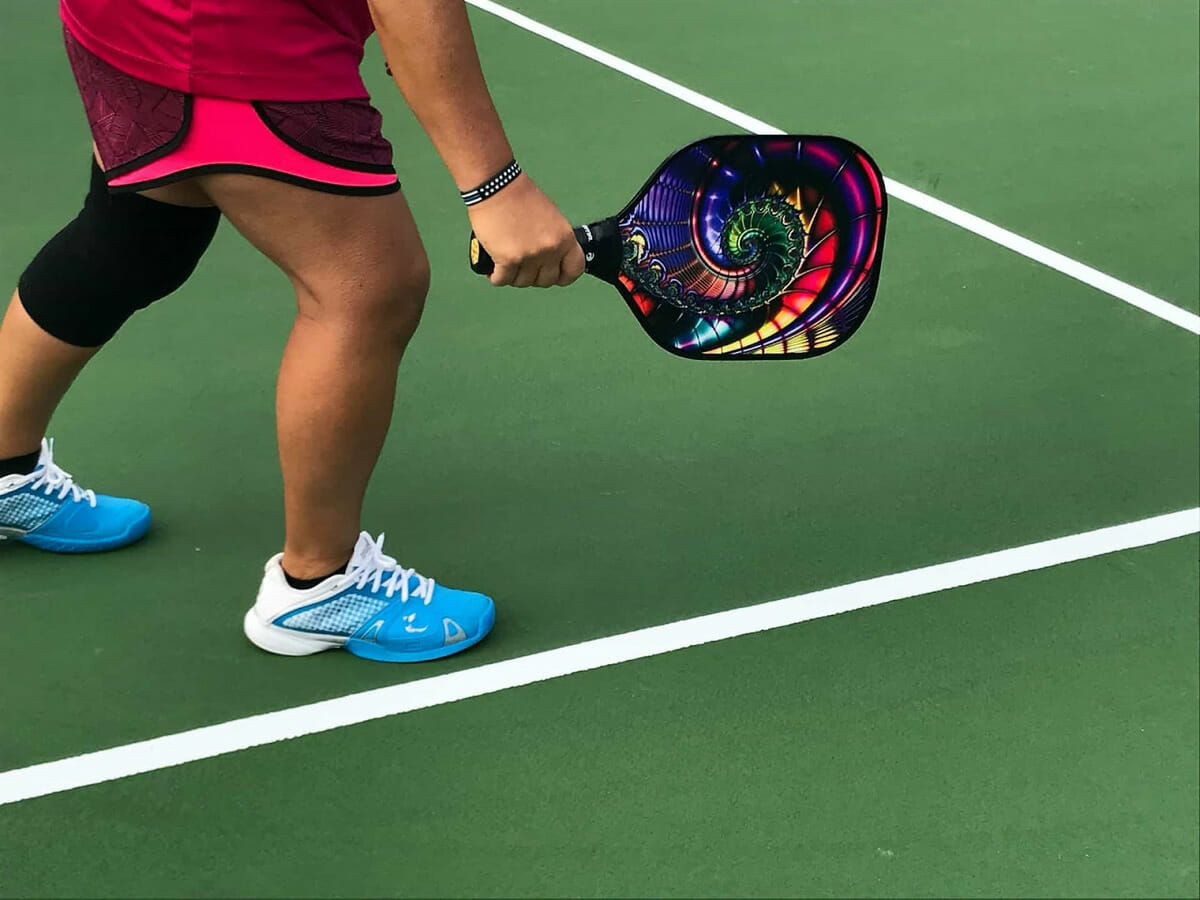
Doubles pickleball rules are identical to singles rules except for the additional pickleball serving rules for doubles. This means that:
- You only score points when your team is serving.
- You must serve underarm and strike the ball below waist height.
- No second serves unless the prior serve is a let.
- When serving, at least one foot should be behind the baseline. Only when the ball is struck may you step on the baseline.
- Each team must allow the ball to bounce once before the first two strikes of each rally (double bounce rule).
- You must not allow the ball to bounce twice on your side of the court.
- You are not allowed to volley the ball in the non-volley zone.
Doubles Serving Sequence
Pickleball doubles serving rules are relatively straightforward. Just note that you only swap positions with your partner when your team is serving, not when you are receiving.
- Play begins with one player serving from the right side of the court diagonally to the opposing side outside of the non-volley zone.
- If the serving team successfully wins the rally, the server moves to the left side and serves diagonally as before.
- After each successful point on the serve, the server switches between the left and ride sides of the court. If the score is even, they will always be on the right side.
- The receiving team stays as they are and never switches sides.
- This sequence of play continues until the serving team loses a rally, at which point the serve switches to the original server’s partner.
- The exception to this rule is at the start of the game. As serving gives you an advantage, the team who serves first only has one player serve before it switches to the other team.
- When the second player on a team who is serving loses the rally, the serve is awarded to the opposing team. The player on the right serves first.
Scoring in Pickleball Doubles
Pickleball scoring for doubles is quite different from any other sport. Without an explanation, you might find yourself very confused. Fortunately, it’s simple to understand.
Unlike most sports which you call two figures, for pickleball doubles scoring, you call it three. For example, 6-4-1 is one possible score.
Where does this third figure come from, you ask? It’s the server! We use this to signify whether player 1 or player 2 in a team is serving. This figure is added at the end of the other two.
So, for 6-4-1, this would mean the team serving is 6-4 up, and the first player in that team is serving.
As you would expect, the first two figures are the score, with the serving team’s score reading first. Below is an example:
6-4-1: The team serving is 6-4 up, and the first player in that team is serving.
Pickleball Kitchen Rules That You Need to Know
In its simplest form, just know that all volleying is illegal when you are in the kitchen. However, it does get a little bit more complex than that. But don’t worry, I’ll break it down in an easily digestible way. As a side note, if you can check out the official rules for yourself.
The kitchen rules in pickleball state that:
- You can only volley outside of the kitchen
- You or anything you are wearing cannot make contact with the kitchen during a volley
- The momentum of your volley cannot carry you into the kitchen
- If you touch the kitchen, both feet must make contact outside of the kitchen before you can volley
- You may enter the kitchen at any time, provided you do not volley the ball
Not so hard to understand, is it? Once you get your head around the fact that the rules encompass the whole volleying sequence, it’s easy to understand.
So jumping, the whole action of your swing, and finishing momentum are all penalizable if you set foot in the kitchen.
Equipment
Now that you know the rules of pickleball, it’s time to talk equipment. You can get started with as much or as little equipment as you really want. As a bare minimum, you’ll need a paddle and some balls. We’ve linked guides for both and recommend that you check them out.
You may also want to consider picking up a pickleball set instead. These can be handy if you have a friend who is also just starting the sport — a two-racket deal will help save you a bit of money. Another product that you might find useful is a pickleball net. If you don’t have any pickleball courts nearby, a portable net allows you to set up a court anywhere.
Read More: Best Pickleball Gifts
FAQs
What Are the New Rules for Pickleball in 2022?
While some 33 pickleball game rule changes were proposed, most didn’t make the cut, and of those that did, there are only 7 you really need to know about.
- Drop serves made legal. You can now drop the ball to serve rather than volley serving. For drop serves, the ball can bounce as many times as you wish.
- Chainsaw service made illegal. You can no longer generate spin when throwing the ball up using two hands. You may, however, still produce spin using one hand.
- Full visibility when serving. Table tennis players will know this rule all too well! For serving in pickleball, the ball must remain visible to the opponent throughout the whole serving motion.
- Continue playing when the score is called incorrectly. If the umpire calls the score wrong, you may not halt a point once it has begun. Instead, let the point conclude and then correct any wrong calls.
- Hearing equipment banned. For tournament play, earphones and headphones are not allowed. Only hearing aids are permitted.
- Carrying extra balls. You can carry additional balls onto the court, provided they do not interfere with play. So make sure you don’t overload your pockets, a dropped ball will result in a fault.
Can You Drop the Ball to Serve?
You can drop the ball to serve. Formerly a provisional serve, drop serves are now completely legal starting in 2022. Drop serves are great for beginners who cannot consistently serve straight out of their hands.
What Are the 5 Rules of Pickleball?
The 5 basic pickleball rules are as follows:
1. Ball must remain within bounds
2. The ball can only bounce once per side
3. You must serve behind the baseline
4. You must serve so that the ball bounces behind the non-volley zone
5. You play games first to 11, 15, or 21 points
Conclusion
The rules of pickleball singles are fairly easy to understand. Just make sure to remember the double bounce rule and the fact that you can only win points on your serve. I feel these are the two main pickleball rules that new players slip up on.
Before you go, I’d also recommend you learn the rules of pickleball for doubles. Playing doubles is extraordinarily common for pickleball, so just knowing the pickleball basics for singles will not suffice. The pickleball rules for doubles build upon the singles ruleset, so there are not that many extra rules to take in.
Freelance writer. Table tennis enthusiast. Lover of all things online. When I’m not working on my loop game I’m probably binge-watching some fantasy show.
-
Alex Horscrofthttps://pingpongruler.com/author/alex-horscroft/
-
Alex Horscrofthttps://pingpongruler.com/author/alex-horscroft/
-
Alex Horscrofthttps://pingpongruler.com/author/alex-horscroft/
-
Alex Horscrofthttps://pingpongruler.com/author/alex-horscroft/
Popular Products
Join our email list for exclusive reviews & the latest Ping Pong News
Sign up to our newsletter and stay up-to-date with the latest news in the ping pong world, and be the first to read our new product reviews. We promise, no spam



